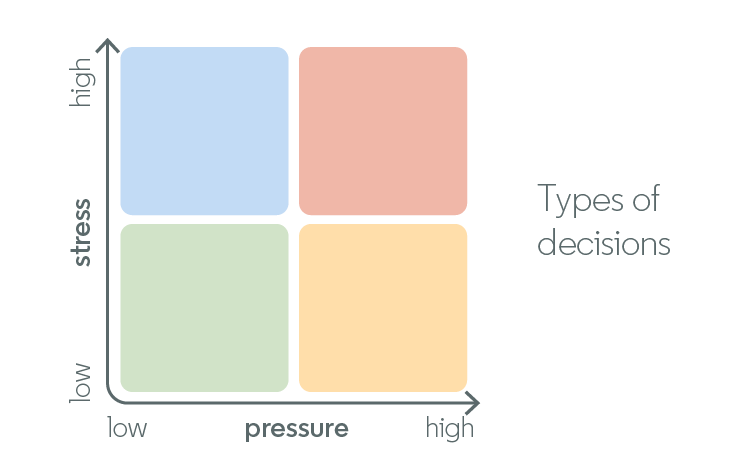
3 Tips for Navigating High-Stress Situations as a Nonprofit Leader
At every nonprofit, high-stress situations crop up from time to time—and as a leader, you know that the way you react impacts how employees will react. If you can solve problems quickly and effectively, your team will gain confidence in your leadership and feel more at ease when times get tough.
“We can all benefit individually and collectively from preventing stress from becoming the enemy of good decisions,” says Becki Saltzman in her LinkedIn Learning course Decision Making in High-Stress Situations.
The past year has demonstrated how important crisis management truly is at nonprofits. To help you better prepare for the next obstacle that arises, here are some helpful tips from Saltzman’s course that you can apply in high-stress situations.
#1: Seek to bring calm and clarity
High-stress situations can take many forms at nonprofits. Maybe one of your biggest donors has abruptly cut ties, or you’re facing media criticism for an action your organization took, or didn’t take. Whatever the case may be, when a crisis presents itself, take the opportunity to regroup, readjust, and react in a way that puts minds and emotions at ease.
Saltzman suggests following this checklist to establish yourself a confident, capable, and calming leader in these moments:
- In in-person settings, look the most panicked person in the eye while you discuss how you’re going to move forward. If you can calm them down, you can calm everyone down.
- Validate how your team is feeling by saying things like “I know you’re scared…” or “I can see that you’re uncomfortable…” “When you acknowledge their personal truth, it communicates that you “get it” and you “get them.”
- Lower your voice and speak slowly to calm everyone down and ensure you have their full attention.
- Prioritize objective truth. How are you going to handle this situation? What kinds of challenges might you face along the way? What makes you qualified to lead your team through this?
- Emphasize support and communicate that the whole organization will get through this together, as a team.

#2: Prioritize time-sensitive decisions
In the face of high-stress situations, it can be challenging to figure out where to start when finding solutions. When in doubt, focus on the most time-sensitive decisions first.
Ask yourself whether there is a set deadline for making these decisions, or if it was self imposed. Saltzman explains that stress comes from our internal reaction to a situation, while high-pressure situations involve external forces that are causing you to take action right away.
For example, let’s say a shipment of vital resources doesn’t arrive for an initiative that’s launching the following week—and when you call the supplier, they say it’s not coming. This is a situation that needs to be dealt with immediately, because without the resources, there is no initiative. Now, let’s say you have a campaign coming up in six months and one of the sponsors has just backed out. Solving that problem is certainly a top priority, but there’s no need to cause yourself unnecessary stress with an urgent self-imposed deadline, especially if you’re already dealing with more time-sensitive matters—like locating a replacement for those missing resources.
“Tease apart your stress and the pressure you feel to make a decision,” says Saltzman, “and you can often give yourself more space, less stress, to make better ones.”
#3: Don’t make decisions on the spot
As a leader, your team looks to you for answers, but that doesn’t mean you always have them. Sometimes you won’t be able to make a decision on the spot—and that’s okay. Your team will appreciate the answer you come up with even more when it’s well thought out and effective.
“In a panic,” says Saltzman, “we offer solutions too early before all available options are considered.”
Just because you’re leading a nonprofit doesn’t mean you’ll be able to solve every problem on your feet. Allowing yourself to step away, evaluate, and come back with a solid solution is more important and more useful in the long run than coming up with an answer quickly.
When people turn to you for answers you don’t have, respond by acknowledging the importance of the situation, then providing a rough timeline for when they’ll hear your decision. For example, you might say: “I know we’re in a hurry and these decisions are important. But science is clear that my decision making—and all of our decision making—is better when conducted offstage. I will get back to you in two days with my answer.”
Strengthen your organization’s resiliency
High-stress situations happen. Taking steps to strengthen your organization’s resiliency can help your team respond more effectively to crises and make better decisions under pressure, so you can leap over any obstacle in your path.
Our Nonprofit Learning Solutions can help, giving your organization access to thousands of expert-led, on-demand courses on everything from leadership to mindfulness and beyond. To learn more, get in touch today.

